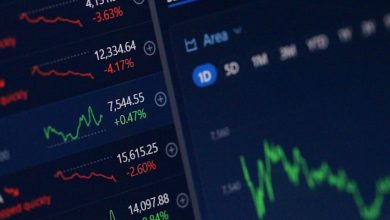How to Identify High-Potential Altcoins for Your Portfolio

- Understanding the criteria for evaluating altcoins
- Researching the team behind the altcoin project
- Analyzing the technology and innovation of altcoins
- Assessing the market demand for the altcoin
- Evaluating the potential for future growth in altcoins
- Diversifying your altcoin portfolio for risk management
Understanding the criteria for evaluating altcoins
When evaluating altcoins for your portfolio, it is crucial to understand the criteria that can help you identify high-potential options. By considering these factors, you can make informed decisions and increase your chances of success in the cryptocurrency market.
One of the key criteria to evaluate altcoins is the team behind the project. Look for a team with relevant experience in the field, a solid track record of successful projects, and a clear vision for the future. A strong team can significantly influence the success of an altcoin and its ability to deliver on its promises.
Another important factor to consider is the technology and innovation behind the altcoin. Look for projects that offer unique solutions to existing problems, have a strong technological foundation, and are supported by a robust development roadmap. Innovative projects with strong technological fundamentals are more likely to succeed in the long run.
In addition to the team and technology, it is essential to evaluate the market potential of the altcoin. Consider factors such as the size of the target market, the level of competition, and the scalability of the project. Altcoins with a large addressable market, a unique value proposition, and the potential for widespread adoption are more likely to generate significant returns for investors.
Furthermore, it is crucial to assess the transparency and credibility of the altcoin project. Look for projects that are open and transparent about their development progress, partnerships, and funding sources. A high level of transparency can help build trust with investors and indicate that the project is legitimate and trustworthy.
By considering these criteria when evaluating altcoins, you can identify high-potential options for your portfolio and increase your chances of success in the cryptocurrency market. Conduct thorough research, stay informed about market trends, and make informed decisions based on the factors that matter most to you as an investor.
Researching the team behind the altcoin project
When researching altcoins for your investment portfolio, it is crucial to delve into the team behind the project. The team’s expertise, experience, and credibility play a significant role in the success of an altcoin. Here are some key factors to consider when evaluating the team behind an altcoin project:
- **Track Record:** Look into the team members’ track record in the cryptocurrency space. Have they been involved in successful projects in the past? Do they have a history of delivering on their promises?
- **Transparency:** Transparency is essential when evaluating the team behind an altcoin project. Are the team members willing to disclose their identities and backgrounds? Do they have a public presence that can be verified?
- **Communication:** Communication is key in the world of cryptocurrency. A strong team will have clear communication channels in place to keep investors informed about the project’s progress and any developments.
- **Community Engagement:** A team that actively engages with the community is more likely to build trust and credibility. Look for projects where the team interacts with investors, addresses concerns, and listens to feedback.
- **Advisors and Partnerships:** Take note of the advisors and partnerships associated with the altcoin project. Well-known advisors and strategic partnerships can add legitimacy and value to the project.
By thoroughly researching the team behind an altcoin project, you can gain valuable insights into the project’s potential for success. A strong, experienced team with a proven track record can significantly increase the likelihood of a high-potential altcoin in your investment portfolio.
Analyzing the technology and innovation of altcoins
When identifying high-potential altcoins for your portfolio, it is crucial to analyze the technology and innovation behind each option. Understanding the underlying technology of an altcoin can provide valuable insights into its long-term potential and sustainability in the market.
One key factor to consider is the consensus mechanism used by the altcoin. This mechanism determines how transactions are validated on the network and plays a crucial role in the security and efficiency of the blockchain. Popular consensus mechanisms include Proof of Work (PoW), Proof of Stake (PoS), and Delegated Proof of Stake (DPoS).
Another important aspect to evaluate is the scalability of the altcoin. Scalability refers to the ability of the network to handle a large number of transactions quickly and efficiently. Altcoins with innovative scalability solutions are more likely to attract users and developers, driving long-term growth and adoption.
Furthermore, it is essential to assess the level of decentralization of the altcoin. A high degree of decentralization ensures that no single entity has control over the network, making it more resistant to censorship and manipulation. Altcoins that prioritize decentralization are often viewed more favorably by the crypto community.
Additionally, analyzing the governance structure of the altcoin can provide insights into how decisions are made and implemented within the network. Transparent and democratic governance processes can foster trust among users and stakeholders, driving community engagement and innovation.
In conclusion, by thoroughly analyzing the technology and innovation of altcoins, investors can make more informed decisions about which options have the highest potential for long-term success in their portfolio. It is essential to consider factors such as consensus mechanism, scalability, decentralization, and governance to identify altcoins that are well-positioned for growth and sustainability in the ever-evolving cryptocurrency market.
Assessing the market demand for the altcoin
When looking to identify high-potential altcoins for your portfolio, it is crucial to assess the market demand for the altcoin. Understanding the demand for a particular altcoin can provide valuable insights into its potential for growth and long-term viability. Here are some key factors to consider when evaluating market demand:
- Market Cap: The market capitalization of an altcoin is a good indicator of its demand and popularity among investors. Altcoins with a higher market cap are generally more in demand and have greater liquidity.
- Trading Volume: The trading volume of an altcoin reflects the level of interest and demand from traders. Higher trading volumes indicate strong demand and active participation in the market.
- Community Support: The level of community support and engagement around an altcoin can also indicate its market demand. Altcoins with a strong and active community are more likely to attract interest and demand from investors.
- Partnerships and Collaborations: Partnerships and collaborations with established organizations or projects can significantly boost the market demand for an altcoin. These partnerships can help increase visibility and credibility, attracting more investors.
By carefully assessing the market demand for altcoins, you can identify high-potential opportunities for your portfolio. It is essential to consider a combination of factors, including market cap, trading volume, community support, and partnerships, to make informed investment decisions.
Evaluating the potential for future growth in altcoins
When evaluating the potential for future growth in alternative coins (altcoins), it is essential to consider various factors that can influence their value and market performance. One crucial aspect to examine is the technology behind the altcoin. Assess the underlying blockchain technology, consensus mechanism, scalability, security features, and any unique selling points that set it apart from other cryptocurrencies. Additionally, analyze the team behind the altcoin, including their experience, track record, and vision for the project. A strong and dedicated team can significantly impact the success of an altcoin.
Furthermore, look into the market demand for the altcoin. Consider its use case, utility, and adoption rate. Altcoins that solve real-world problems or offer innovative solutions are more likely to attract investors and users, leading to potential growth in the future. Additionally, assess the competition in the market. Look at similar altcoins and their market share, trading volume, and community support. Understanding the competitive landscape can help you gauge the potential for growth in a particular altcoin.
Moreover, keep an eye on market trends, news, and regulatory developments that could impact the altcoin market. Stay informed about industry updates, partnerships, and collaborations that could boost the value of certain altcoins. By staying up-to-date with the latest developments in the cryptocurrency space, you can make more informed decisions about which altcoins have high potential for future growth in your portfolio. Remember to diversify your investments and conduct thorough research before investing in any altcoin to mitigate risks and maximize potential returns.
Diversifying your altcoin portfolio for risk management
Diversifying your altcoin portfolio is crucial for effective risk management in the volatile cryptocurrency market. By spreading your investments across a variety of altcoins, you can reduce the impact of any one coin’s poor performance on your overall portfolio. This strategy helps to protect your investments and potentially increase your returns over time.
One way to diversify your altcoin portfolio is to invest in coins with different use cases and applications. For example, you may want to consider investing in a mix of privacy coins, decentralized finance (DeFi) tokens, and platform coins. By diversifying across various sectors of the cryptocurrency market, you can reduce your exposure to any single sector-specific risk.
Another approach to diversification is to consider the market capitalization of the altcoins in your portfolio. While it can be tempting to invest only in high-cap coins like Bitcoin and Ethereum, smaller-cap altcoins can offer higher growth potential. By including a mix of large-cap, mid-cap, and small-cap altcoins in your portfolio, you can balance risk and reward effectively.
Furthermore, geographic diversification can also be beneficial for managing risk in your altcoin portfolio. Investing in altcoins from different regions can help protect your investments from regulatory changes or other region-specific risks. By considering altcoins from various countries and jurisdictions, you can reduce the impact of any one region’s economic or political factors on your portfolio.
In conclusion, diversifying your altcoin portfolio is an essential strategy for risk management in the cryptocurrency market. By spreading your investments across different coins with varying use cases, market capitalizations, and geographic locations, you can protect your investments and potentially increase your returns over time. Be sure to conduct thorough research and due diligence before making any investment decisions to ensure that your altcoin portfolio is well-diversified and positioned for long-term success.



